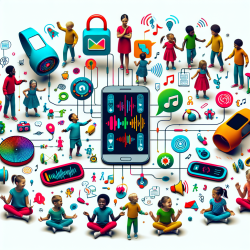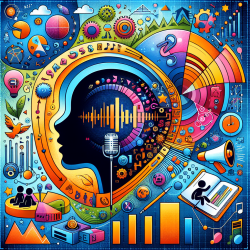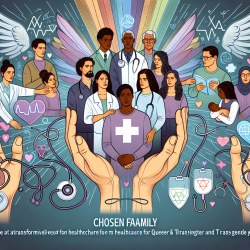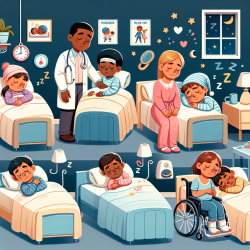Introduction
The integration of mobile and wearable technologies in health-related research is revolutionizing our understanding of child development. The study titled "Current, future and potential use of mobile and wearable technologies and social media data in the ABCD study to increase understanding of contributors to child health" provides a comprehensive overview of how these technologies can be harnessed to enhance our understanding of childhood and adolescent neurodevelopment. As practitioners in speech-language pathology, leveraging these insights can significantly improve therapeutic outcomes for children.
Harnessing Technology for Better Outcomes
The Adolescent Brain Cognitive Development (ABCD) study highlights the potential of mobile and wearable technologies to capture real-time data on various factors influencing child development. This includes environmental, physiological, behavioral, and psychological domains. For speech-language pathologists, this data can provide a deeper understanding of the contextual factors affecting a child's communication abilities.
- Real-time Data Capture: Mobile devices and wearables can track a child's interaction with their environment, providing insights into how different settings may impact their communication skills.
- Behavioral Monitoring: Wearables can monitor physiological responses and activity levels, offering clues to behavioral patterns that may affect speech and language development.
Encouraging Further Research
The rapid advancement of technology presents both opportunities and challenges. As speech-language pathologists, staying informed about these developments is crucial. Engaging in interdisciplinary research and collaborations can lead to innovative approaches in therapy.
- Interdisciplinary Collaboration: Working with researchers from fields such as psychology, neuroscience, and data science can enhance the understanding of complex developmental issues.
- Continued Education: Attending workshops and conferences focused on technology in healthcare can provide valuable insights and skills.
Practical Applications in Therapy
Incorporating mobile and wearable technologies into speech-language therapy can enhance engagement and provide more personalized care. For instance, using apps on tablets to conduct assessments or track progress can streamline the therapeutic process and provide immediate feedback.
- Enhanced Engagement: Interactive apps can make therapy sessions more engaging for children, encouraging participation and motivation.
- Data-Driven Decisions: Utilizing data from wearables can inform therapy plans, ensuring they are tailored to the individual needs of each child.
Conclusion
The integration of mobile and wearable technologies in the ABCD study offers valuable insights that can be applied in speech-language pathology. By embracing these technologies, practitioners can enhance their understanding of the factors influencing child development and improve therapeutic outcomes. To read the original research paper, please follow this link: Current, future and potential use of mobile and wearable technologies and social media data in the ABCD study to increase understanding of contributors to child health.










